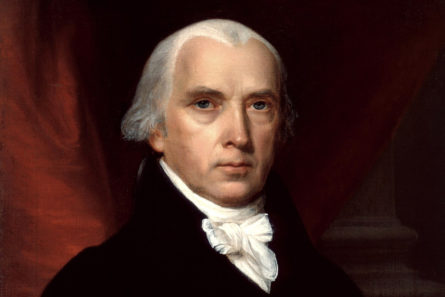An Empty Attack on the Nondelegation Doctrine
Peter Wallison

Since 2019, a majority of the current Supreme Court has expressed interest in revitalizing the nondelegation doctrine, which prohibits Congress from delegating any of its lawmaking power to regulatory agencies in the executive branch. Unfortunately, relying on a highly deferential application of this constitutional principle, the Court has not invoked the nondelegation doctrine to strike down a statute since 1935. That contributed to broad delegations of rulemaking power to regulatory agencies in the decades that followed. A reinvigoration of the nondelegation doctrine, accordingly, has the potential to restrict the growth and power of these agencies, better known today as the “administrative state.” This has made the nondelegation doctrine highly controversial among some in the academic community and those on the political left.
The Court’s base of support for a revitalized nondelegation doctrine began with a dissenting opinion by Justice Gorsuch—joined by Chief Justice Roberts and Justice Thomas—in Gundy v. United States, and an approving separate statement by Justice Alito. Justice Kavanaugh, who had not participated in the Gundy decision, expressed a similar interest in considering the nondelegation issue later in 2019. Justice Amy Coney Barrett, who was appointed last fall, is an originalist (applying the original meaning of the Constitution) and may well be a potential sixth vote in support of the nondelegation doctrine.
A counterargument by University of Michigan law professors Julian Davis Mortensen and Nicholas Bagley appeared earlier this year in an article published in the Michigan Law Review and entitled “Delegation at the Founding.” In it, the authors say they have refuted “the claim that the Constitution was originally understood to contain a nondelegation doctrine.” Although the paper is a lengthy review of the discussions and controversies that occurred before and after the Constitution was drafted and took effect, it misses the forest for the trees.
The paper’s principal error is its failure to give any significant attention to the importance of the constitutional separation of powers and the arguments of James Madison in the Federalist Papers. The nondelegation doctrine derives its importance directly from the constitutional separation of powers, and Madison argued repeatedly that dividing the government’s powers among the three branches in the Constitution was the key to preserving the American peoples’ liberties.
Madison’s arguments were made directly to the people of the original thirteen colonies, principally through the Federalist Papers, and were discussed during key state ratification debates. Thus it is reasonable to assume that Madison’s strong views about the Constitution’s separation of powers were one of the reasons that the people ultimately approved the new constitutional structure. Accordingly, Madison’s arguments are by far the most important evidence of what the people who ratified the Constitution believed about the separation of powers, including whether Congress could delegate its legislative authority.
Madison presented his views on the structure of the Constitution in Federalist Nos. 47, 48, and 49, none of which was even cited in “Delegation at the Founding.” And Madison could not have been more clear about the significance of the separation of powers to his view of the new Constitution, famously noting in Federalist No. 47:
The accumulation of all powers, legislative, executive, and judiciary, in the same hands, whether of one, a few, or many, and whether hereditary, self-appointed, or elective, may justly be pronounced the very definition of tyranny.
In other words, a strict separation of legislative, executive, and judicial authority was essential to preserving Americans’ liberties, and that would include what Madison argued then and afterward—that in observance of the separation of powers, Congress may not delegate any of its legislative authority to the other branches of government. Moreover, Madison believed that the checks and balances among the branches (such as the president’s ability to veto legislation, Congress’s power to appropriate funds for the other branches, and the judiciary’s power to see that the other branches stay within their assigned roles) were also key elements of the separation of powers. Thus, he wrote in Federalist No. 51:
To what expedient, then shall we finally resort, for maintaining in practice the necessary partition of power among the several departments, as laid down in the Constitution? The only answer that can be given is, that as all these exterior provisions are found to be inadequate, the defect must be supplied, by so contriving the interior structure of the government as that its several constituent parts may, by their mutual relations, be the means of keeping each other in their proper places.
It should be no surprise, then, that Madison’s views would be the source of all Supreme Court decisions afterward that cited restrictions on Congress’s delegation of its legislative authority—initially, in Wayman v. Southard in 1825 (“The line has not been exactly drawn which separates those important subjects which must be entirely regulated by the legislature itself . . .”), through Field v. Clark in 1892 (delegation of authority to make the law simply “cannot be done”), through Panama Refining Co. v. Ryan and A.L.A. Schechter Poultry Corp. v. United States in 1935 (where Congress was deemed to have unconstitutionally delegated legislative powers to the president)—so that there is a consistent thread from 1825 through 1935. Since then, the Supreme Court, using a new and more ambiguous rule requiring only an “intelligible principle” in a statute to avoid a finding of unconstitutional delegation, has never found an unconstitutional delegation of legislative authority. However, the Court has never abandoned the principle that such a delegation is not permitted, even though delegations may not have been found in particular cases.
If Mortensen and Bagley had hoped to make a case against the nondelegation doctrine, they had to counter Madison’s views, but they did not even make a serious attempt. As noted, Federalist Nos. 47, 48, 49, and 51 were not even cited in their paper. Instead, they argued that the political philosopher John Locke—who was widely seen by theorists and others at the time as the source of the idea that the people had delegated their power to make the laws to the new Congress—did not have a fixed or immutable view of delegation. Locke believed instead that a legislature could not “alienate” or “transfer” its powers. Needless to say, neither that nor the views of many members of the first few Congresses, is relevant to a determination of what the people thought at the time they voted to adopt the new Constitution.
On the evidence of the Federalist Papers, the people believed that separating the legislative, executive, and judicial powers as much as possible was the most important question of constitutional structure, and we have no evidence to the contrary.
Thus, the authors’ summary statement, “Forget the debate over whether the nondelegation doctrine is truly dead. It was never really alive to begin with,” is entirely fanciful. At best it is wishful thinking, with no support in the Federalist Papers or the dozens of succeeding Supreme Court cases that have acknowledged the separation of powers as the source of the nondelegation doctrine.

Author
Senior Fellow, Arthur F. Burns Fellow in Financial Policy Studies
American Enterprise Institute
Topic
Sponsor
Federalist Society’s Administrative Law & Regulation Practice Group
The Federalist Society and Regulatory Transparency Project take no position on particular legal or public policy matters. All expressions of opinion are those of the author(s). To join the debate, please email us at [email protected].



